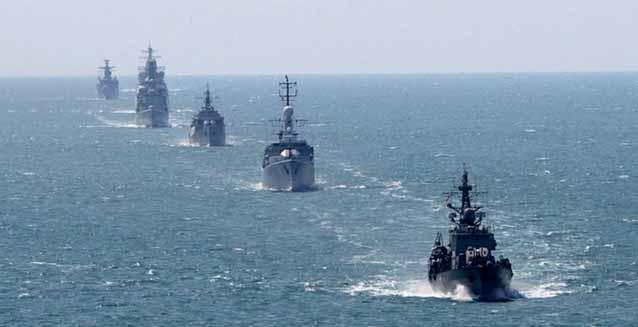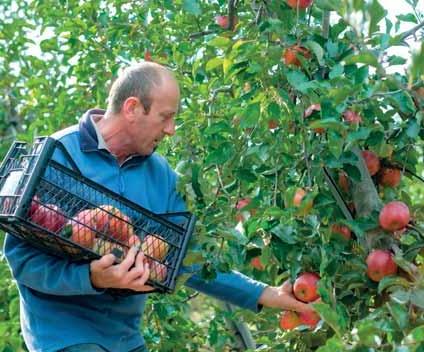
8 minute read
POLITICS
from Issue #1304
Anchors Away for a New Georgian Navy
Photo by NurPhoto/NurPhoto via Getty Images
Advertisement
ANALYSIS BY MICHAEL GODWIN
Virtually all nations with signifi cant coastlines maintain, as a part of their larger armed forces, a naval service component. While there are exceptions, mostly small Pacifi c islands that defer to Australia for military defense, coastal defense is a key component. This becomes more important when the particular body of water bordering the nation is strategically vital to regional defense. In Georgia’s case, this is the Black Sea.
With the recent Sea Breeze 2021 naval training exercise, the images of NATO’s tall ships juxtaposed to Georgia’s smaller white Coast Guard boats displayed this disparity in naval power. With 310 kilometers of coastline, it’s somewhat shameful that there is no Navy stationed anywhere along this coast. This has not always been the case. While the Georgian Navy was never over 19 vessels, none of which were of signifi cant size by current NATO comparison, it still served with distinction. During the Abkhaz War, they managed to evacuate many women and children and even score a victory against a small fl otilla of enemy boats.
Following the internal confl icts, Georgia was supported with vessels and training by Ukraine after Russia blocked the sale or transfer of equipment. Turkey even donated material and training throughout the late 1990s and early 2000s. However, during the 2008 War, Russian aircraft and naval ships attacked the city and naval port of Poti. In the process of sinking a plurality of the Georgian Navy’s vessels, the city was ransacked by Russian land forces. In the aftermath, Georgia merged the remnants of the Navy with the Coast Guard.
Since then, the Coast Guard has operated with increasing success in training operations with NATO, as well as hosting various Black Sea naval patrols. This has laid the groundwork of knowledge and experience for the future of the next, reborn, Georgian Navy. In fact, the Coast Guard, a part of the larger Border Police of Georgia in the Ministry of Internal Affairs, maintains several small ships that would make for the fi rst warships. In addition, the procurement of more vessels of larger size and of diverse capabilities would take place. To do this, the Navy would need to turn to some of the larger nations that are retiring their older but perfectly capable ships.
An ample candidate for this is the United States Navy. Their mothball fl eet has been slowly growing as the force shrinks due to the lack of signifi cant naval power in the world overall. When compared to their Cold War era navy, and particularly their Second World War navy, they only have a fraction of the need for large battleships and cruisers. As these ships become either unnecessary fi nancially or obsolete to newer models, they are often sent to a scrapyard or sold to allied navies. In fact, when looking at many of the NATO navies during the cold war, much of the fl eets were staffed by ships that once served the United States Navy against the axis forces.
The large transfer of these ships was aimed as a strengthening maneuver to counter the potential of Soviet aggression in Europe. Now, as Russia begins to mimic this aggression, even acting on it in Georgia and Ukraine, it becomes another opportunity to check this expansionism. Indeed, a new Georgian Navy would also cut off Russia from its campaign in Syria. As it is Russia’s “baby” in foreign military policy, slicing this element from their proverbial fat would keep them in their sphere and contain the threat in the embattled Middle East nation.
However, the focus would, and should, remain on the region. Supporting a key ally in the Black Sea would be instrumental in keeping Russia’s Black Sea Fleet in check. Particularly since they have become so unleashed as to fi re warning shots at a passing British Royal Navy ship, something that in past times would elicit counter actions.
Of course, reviving such a sizable navy is not without its expenses. From crew costs to maintenance, keeping warships is no inexpensive affair. With proper political maneuvering, some support can come from foreign entities. However, it is not a viable long-term plan, and a new Georgian Navy requires the support that will keep the Black Sea in the fi rm grasp of trustworthy forces. To do this, Georgia may need to reduce its frivolous government spending and focus on things that affect its sovereignty. Fewer leather chairs, more anti-aircraft weapons.
With the Black Sea being the next naval fl ashpoint, a position contested only by the South China Sea, it is imperative that NATO keep a close ally in the region. Turkey, while a NATO member and with a navy to support this mission, is not enough. Their recent purchase of Russian military hardware should be enough to push NATO to invest in an insurance policy, namely Georgia. Georgian naval assets would be instrumental in orchestrating a network of security and safety against the reckless Russian Black Sea Navy.
Shifting this power to Georgia is not only a move to promote Georgia’s ascension to NATO, but also a guarantee of trust and partnership. This level of investment is something Tbilisi would surely welcome, with Washington D.C. and Brussels operating with more freedom with the Black Sea out of the grasp of the Kremlin. While the cost of a new navy is not contestable, the cost of surrendering the Black Sea, and as such the South Caucasus, is far more expensive and in more so than mere dollars.

Image source: Georgian Ministry of Internal Affairs
BUSINESS GeoGAP, Setting the Standards: Translating Consumer Requirements into Good Agricultural Practice
BY ANA DUMBADZE AND KATIE RUTH DAVIES
GLOBALG.A.P. is an internationally recognized set of farming standards based on Good Agricultural Practices (GAP). The principal objective of the scheme is to ensure the safety and quality of agricultural products and sustainable practices among farmers, retailers, and consumers.
There is a strong and growing demand from consumers, retailers, suppliers, and producers in Georgia for food safety standards to be established, yet, today, micro and small farmers from Georgia are not always able to comply with international standards.
To address this, the Georgian Farmers Association (GFA), with the support of USAID through its ‘Zrda’ project, has developed a local standard, named GeoGAP, for primary agricultural products, at the initial stage dealing with fruits and vegetables.
Through GeoGAP, which is tailored to local conditions, the GFA is supporting local farmers in the process of adopting sustainable agricultural practices to be in line with food safety requirements, thus helping them to move towards European standards. In addition, this will help increase food safety on local markets and promote exports of high quality products from Georgia.
We spoke to three Georgian farmers who have already received their GeoGAP certifi cation, and one who is on the way to getting his, while being well-aware that there are more such farmers in the pipeline aspiring to achieve this international-standard recognition.

Giorgi Tediashvili: It’s a special feeling when a product made by your hands is distinguished in quality, can only benefi t consumers, and does no harm to the environment
and even now I’m in the process of constant learning and discovery,” says Giorgi Tediashvili, a GeoGAP Certifi ed Farmer from Breti village, Kareli region.
Giorgi is an agronomist by profession. He was educated fi rst in Georgia and then in Germany. The idea of running his own farm emerged many years ago. He knew exactly from the start that taking special care during the production process would be the key point and pillar of his activities.
He also knew he needed a team and an auxiliary system in his work, and the possibility of getting local certifi cation from GeoGAP greatly appealed to him. The gradual implementation of the requirements of GeoGAP made his activities more consistent and of higher quality. "You should grow your produce exactly as if it is intended for your own family members,” he tells us. “It’s a special feeling when you know that a product made by your hands is distinguished in quality, can only benefi t consumers, and does no harm to the environment.”
Today, Giorgi cultivates seven varieties of apples, and is constantly working on experimental varieties, of which he boasts in excess of 50 types, with plans to expand further and produce new crops. With the introduction of GeoGAP certifi cation and the production of a safe product, he is now able to offer distinguished quality products to customers on the local market and in doing so, to gain their trust. Further, he now has the opportunity to go beyond Georgia and try his hand in other countries.
WHY WOULD YOU ADVISE FARMERS TO WORK TOWARDS THE GEOGAP STANDARD THEMSELVES?
quality production,” Giorgi tells us.
BRANCHING OUT INTO EXOTIC HERBS
Kakha Tutberidze has been running a greenhouse in Rustavi for several years now, together with his family.
Initially, the goal was to cultivate wellknown, traditional crops, but the course soon changed and they decided to grow “exotic” herbs that were totally new to Georgia. Today, their list of products includes Kale, Pak-Choi, Mizuna, and Fennel, the taste and aroma of which quickly captured their Georgian customers’ imagination.
The main precondition for stability for them was the GeoGAP certifi cation program, with the help of which Kakha checks, observes and records all stages of production.
Kakha says that the main challenge for local farmers is acquiring new knowledge and getting acquainted with new technology.
“The standard on which our production is based, and which gives us the status of a safe producer, is crucial. GeoGAP certifi cation is proof of the safety of our business, which opens the doors to many more partners and makes it easier to negotiate. You feel especially proud knowing you can be confi dent in the quality of your products and knowing that vegetables grown to these standards will compete with the products of countries with many years of agrarian tradition.”





